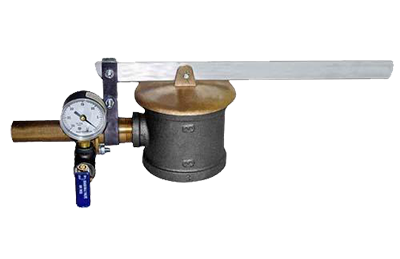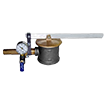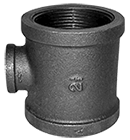Exhaust Primer
Exhaust Primer – Air Operated Primers
Exhaust Primers (EP) are air operated primers comprised of an Ejector and cast iron Adapter that has a cap and handle attached. Unit operates on low engine exhaust pressure or air pressure from other sources. When the exhaust valve (adapter cap) is closed, gases are directed through ejector, and water is drawn to pump by ejector vacuum.
- *Note: When ordering an EP, ejector size is determined by engine displacement in cubic inches, and adapter size is determined by the outer diameter of the exhaust pipe and whether or not the pipe is threaded.
- Example: Engine displacement is 250 cubic inches, and the diameter of the exhaust pipe is 3 inches, therefore you need an EP250-300 3NPT.
-
INSTALLATION & OPERATION OF PROTEK EXHAUST PRIMER
- Use adapter to attach ejector to engine exhaust stack.
- Pump discharge must be closed while priming. This can be done by installing a discharge check valve or hand operated gate valve.
- Install vacuum gauge and priming valve on priming line, between the valve and ejector.
- Vacuum gauge should indicate priming rate of 18-22 Hg.
- PSIs should be between 12 and 15 or 1500-2300 RPMs.
- After priming is completed, lay handle and brass cap 180 degrees from priming position to allow exhaust to escape.
- Use adapter to attach ejector to engine exhaust stack.
-
MAINTENANCE
- Before every use, check the unit for accumulated build-up of dirt or soot from the engine exhaust.
- If vacuum gauge is not working, replace before using EP.
-
SAFETY & RECOMMENDATIONS
- EPs will not work effectively on single cylinder or two cycle (two strokes) engines.
- Installing a Tachometer on the engine is useful to determine RPM.
- Priming line air leaks may prevent priming.
- Protek does not recommend the use of EPs on turbo engines.
- Call Protek Technical Support for additional help.
-
Exhaust Primer – Parts
























